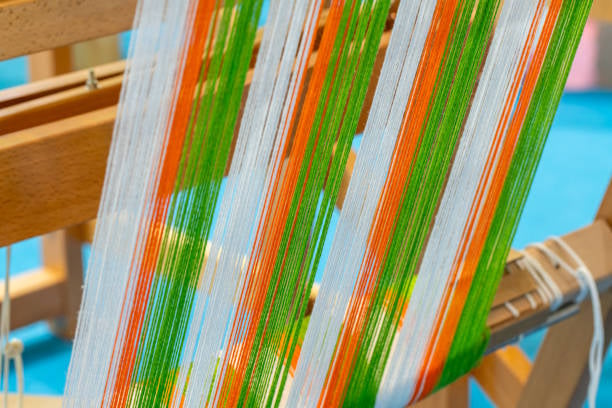Table of Contents

Introduction
Learning how to cut strips of fabric is an essential skill for any sewing enthusiast. Whether you're making quilts, clothing, or home decor, fabric strips are a versatile and widely used component. In this article, we will provide you with a step-by-step guide on how to cut fabric into strips, and offer tips and tricks to ensure accurate and efficient cutting. Let's get started!
1. Choosing the Right Fabric
The first step in cutting fabric strips is selecting the appropriate fabric. Consider the project you're working on and choose a fabric that suits your needs. For quilting projects, cotton fabric is often preferred due to its durability and ease of cutting. Garment projects may require a different fabric, such as silk or denim, depending on the desired look and feel. Ensure that the fabric is clean, pressed, and free from any wrinkles or creases before cutting.
2. Measuring and Marking
Precision is key when cutting fabric strips. Start by measuring and marking the desired width of your strips on the fabric using a fabric marker or chalk. A ruler or measuring tape can be helpful in ensuring accuracy. Consider the seam allowances and finished dimensions of your project when determining the width of the strips. If you're unsure, it's always better to cut wider strips that can be trimmed down later.
3. Using a Rotary Cutter and Cutting Mat
A rotary cutter and cutting mat are essential tools for cutting fabric strips efficiently. Place the fabric on the cutting mat and align the ruler with the marked line. Hold the ruler firmly in place and carefully guide the rotary cutter along the edge of the ruler, cutting through the fabric. Using a rotary cutter allows for smooth and precise cuts, especially when cutting multiple layers of fabric.
4. Scissors: An Alternative Method
If you don't have a rotary cutter, or if you're working with a small piece of fabric, scissors can be used as an alternative. Ensure that your scissors are sharp and have a pointed tip for accurate cutting. Start by folding the fabric along the marked line, aligning the edges. Hold the folded fabric firmly and carefully cut along the marked line using the scissors. Take your time to ensure clean and straight cuts.
5. Cutting Bias Strips
Bias strips are fabric strips cut on a 45-degree angle to the straight grain of the fabric. These strips are commonly used for bindings, piping, and other decorative elements in sewing projects. To cut bias strips, start by aligning the fabric on the cutting mat at a 45-degree angle. Use a ruler and rotary cutter to cut parallel strips across the fabric. Bias strips have a bit of stretch, making them ideal for curved edges.
6. Dealing with Stretchy Fabrics
Some fabrics, like knits or jersey, have a tendency to stretch or curl, making them challenging to cut accurately. To overcome this, it's helpful to stabilize the fabric before cutting. One method is to use a spray starch or fabric stabilizer, which adds stiffness to the fabric and minimizes stretching. Alternatively, you can place tissue paper or a lightweight interfacing on top of the fabric before cutting to provide stability.
7. Strip Cutting Tools
If you frequently cut fabric strips of the same width, investing in strip cutting tools can save you time and effort. Strip cutting tools, such as strip cutters or strip rulers, have built-in guides that allow you to cut multiple strips of the same width with ease. These tools are especially useful for quilters who often need precise and consistent strip measurements.
8. Organizing and Storing Fabric Strips
Once you've cut your fabric strips, it's important to keep them organized and stored properly. Consider using storage containers or clear plastic bags to keep your strips neatly organized and protected from dust and moisture. Labeling the containers or bags with the width and type of fabric can also be helpful when working on multiple projects simultaneously.
9. Using Fabric Strips in Different Projects
Fabric strips can be used in a variety of sewing projects. Quilts often feature fabric strip patterns, such as log cabins or jelly roll designs. Fabric strips can also be used for binding edges, creating ruffles, or making fabric jewelry. Explore different projects and experiment with various strip widths and fabric combinations to unleash your creativity.
10. Practice and Patience
Like any skill, cutting fabric strips takes practice and patience. Don't get discouraged if your first attempts are not perfect. With time, you will develop a steady hand and a keen eye for accurate cutting. Remember to take breaks, stay focused, and enjoy the process of creating beautiful projects with your fabric strips.
